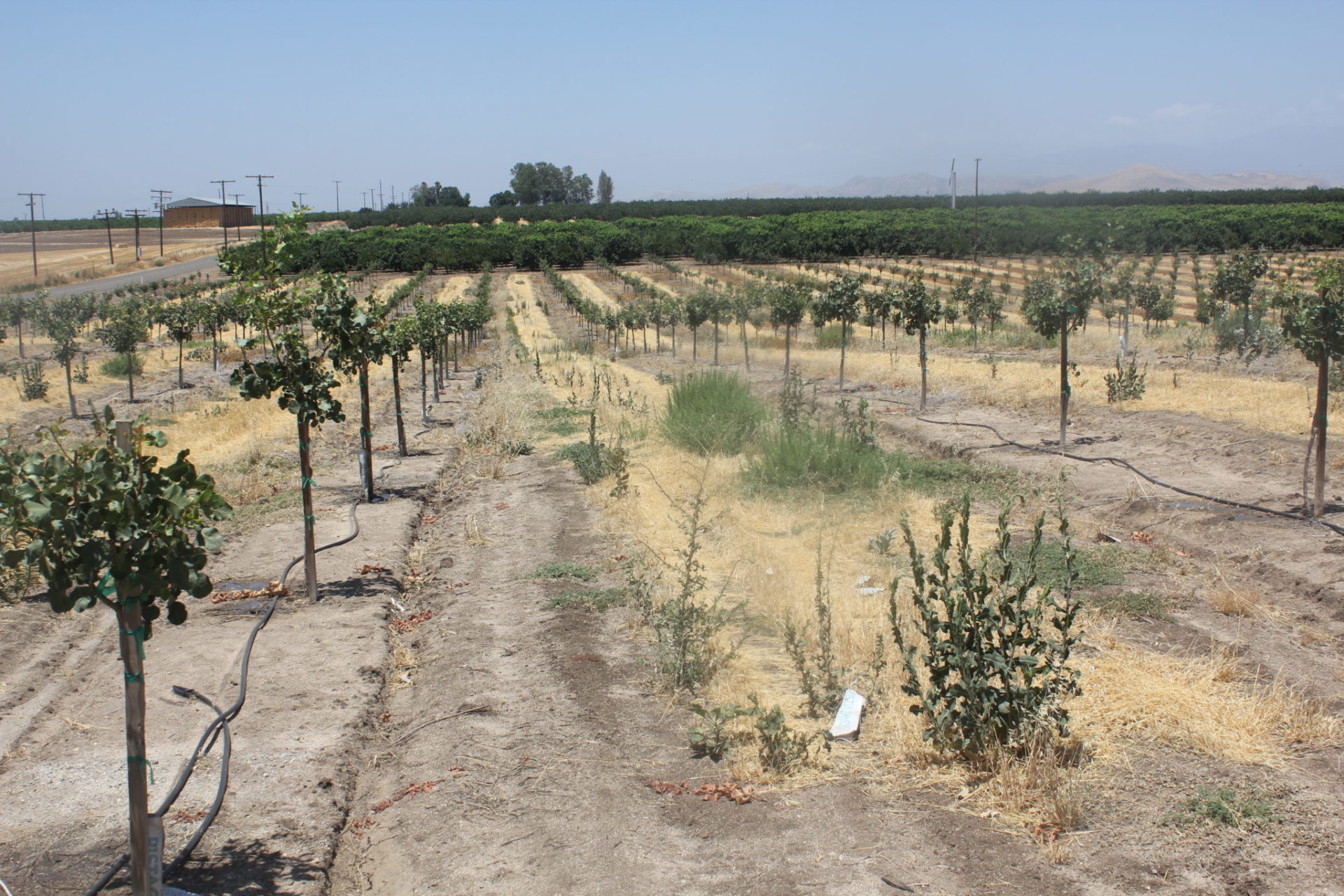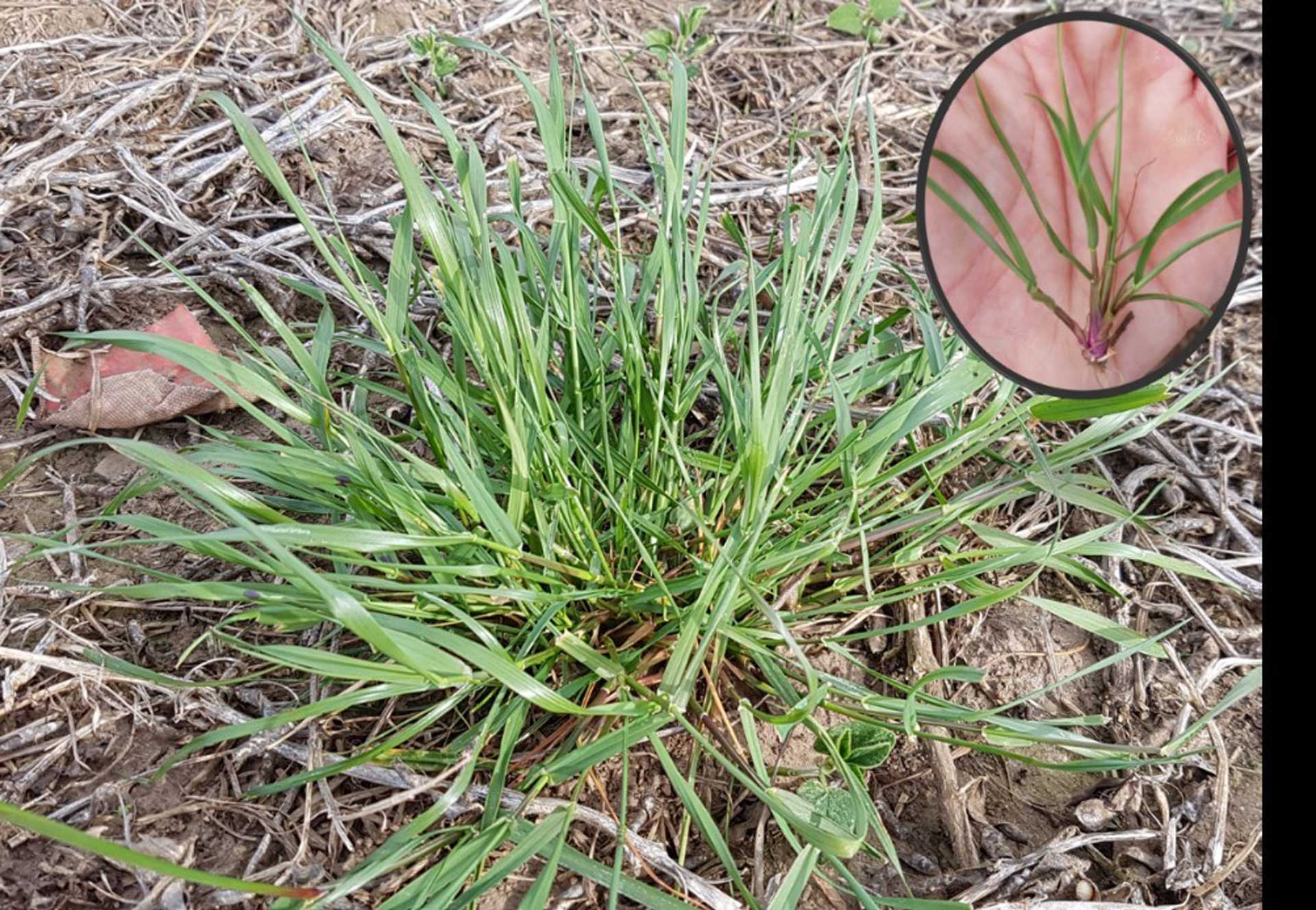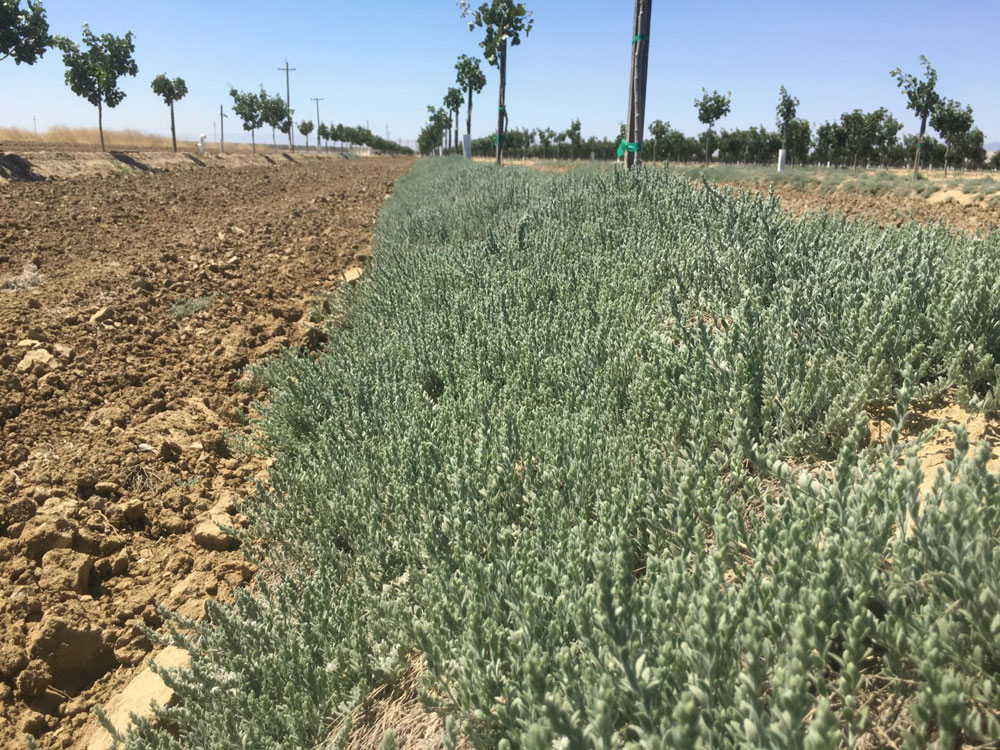
Planning and persistence with weed control is one way to ensure a healthier start for young nut trees. Lack of an effective weed control program early in the life of an orchard robs young trees of water, nutrients and light, affecting their growth and yield potential in the future.
When weeds are not controlled, large seed banks can build in the soil and a grower will be playing catch up for years to bring down weed pressure. Large weeds uncontrolled in a young orchard can affect herbicide spray efficacy and hold leaf litter in place, shielding emerging weeds from herbicide sprays.
Ongoing Management
Brad Hanson, UC Davis weed specialist, said weed management in an orchard is not a one-time practice. New species can move in and resident species can bounce back. Planning a long term and effective weed control program involves being aware of problem areas, choosing the right control materials, timing applications for when they will be most effective, and evaluating the results.
One of the best weed controls in young orchards is a preemergent herbicide. Although not every orchard herbicide can be used in new plantings, the allowable preemergent materials generally bind to organic matter and soil and have limited leaching. Applied to the soil prior to weed seed germination, they can stop growth of weed shoots and roots and add some residual control. Post-emergent herbicides include contact materials that burn down weeds or systemics that kill weeds over time.
If at all possible, weed control on an orchard site should begin even before planting. This strategy is even more important if there are tough-to-control perennial weeds or high weed pressure in the field. Taking an integrated management approach to weed control calls for mapping the site, planning weed control strategy, and implementing the plan with well-calibrated spray equipment.
The key to effective and safe weed control with preemergent products, Hanson stressed, is for the herbicide to remain above the shallow roots of the young trees, but into the soil at the depth of the weed seeds. If it sits on top of the soil, it will be less effective. If pushed deep into the soil too much with water, some herbicides can injure new trees with small root systems. Most preemergent products need between .25 and .5 inches of rain or irrigation to be effective and reach the weed seeds.
Cleaning orchard floors of leaf litter, dried weeds and any other litter that prevents soil contact with the herbicide will enhance efficacy.
There is more risk of injury with young trees. If the herbicide application is to be made after planting, Hanson recommended waiting until soil is well settled around the tree before applying the preemergent herbicide. Cartons are important in keeping post-emergent herbicide off the trunks of the young trees. Leaving the cartons in place until the beginning of the second year will help minimize exposure to herbicides. When applying the material, make sure spray equipment is calibrated, set up and operated correctly to minimize drift into the tree canopies.
The optimum time for application of a preemergent herbicide is prior to seed germination. Hanson said most applications of preemergent herbicides in California tree nut orchards are done in the winter months before weeds germinate and rainfall can move the material in the soil.
Identify Weeds in the Orchard
UCCE Orchard Systems Advisor Katherine Jarvis-Shean’s Young Orchard Handbook includes several key steps for weed control in new orchards.
Identification of weed species is an important first step, as selection of a preemergent or post-emergent herbicide hinges on what weeds are growing in the orchard.
With a new orchard site, the previous crops may give an idea of which weed species are likely to be present. In existing orchards or a replant site, the weed history and mapping of problematic areas can help with herbicide selection.
In addition to identification of known weeds, there can be new species invading the orchard. Monitoring weed populations twice a year is recommended. Monitor in the fall, noting summer species that escaped and emerging winter species. Late spring monitoring should be done to find winter weeds that were not controlled. Hanson said some growers take a more formal approach and produce extensive maps that pinpoint heavy weed pressure areas in their orchards.
“Based on field scouting and record keeping, they know that one portion of the orchard has a weed problem while it’s still a relatively small problem. If they focus their intensive control efforts on the problem areas, they may be able to save money by using less-intensive programs in the rest of the orchard,” Hanson noted.
Herbicide resistance has become a challenge in weed management. Glyphosate has been valuable for its broad weed control spectrum, but reliance on a single mode of action has led to resistance in several broadleaf and grass species. UCCE orchard systems advisors are recommending herbicide rotations, tank mix combinations, sequential treatments and incorporation of non-chemical strategies to control resistant populations and minimize risk of future cases of resistance.
Get a Clean Start
Patterson, Calif. almond grower Daniel Bays shared some of his orchard weed control strategies. The game plan, he said, is to begin with a clean orchard and keep it clean. Although that can involve considerable investment in time and labor, he said it is easier than trying to clean up weed infestations. In developing a new orchard, he said he would pull up berms early, and when timing is right, apply a preemergent on the clean berms. Post planting, if conditions are right, a preemergent is applied to the soil.
If problem areas in an orchard develop, Bays will come in and spot spray before the weeds mature, but he said care should be taken to avoid drift of the material into the tree canopy. Knowing the weed history of an orchard site is helpful, especially if problem areas can be identified.
Bays said problem weeds in his orchards include bindweed, nutsedge and Johnsongrass. A new weed, threespike goosegrass, has also become common in orchards. If these are not controlled early with a good weed management plan, he said, they will get out of hand quickly and it will take a couple of years to get them under control.










